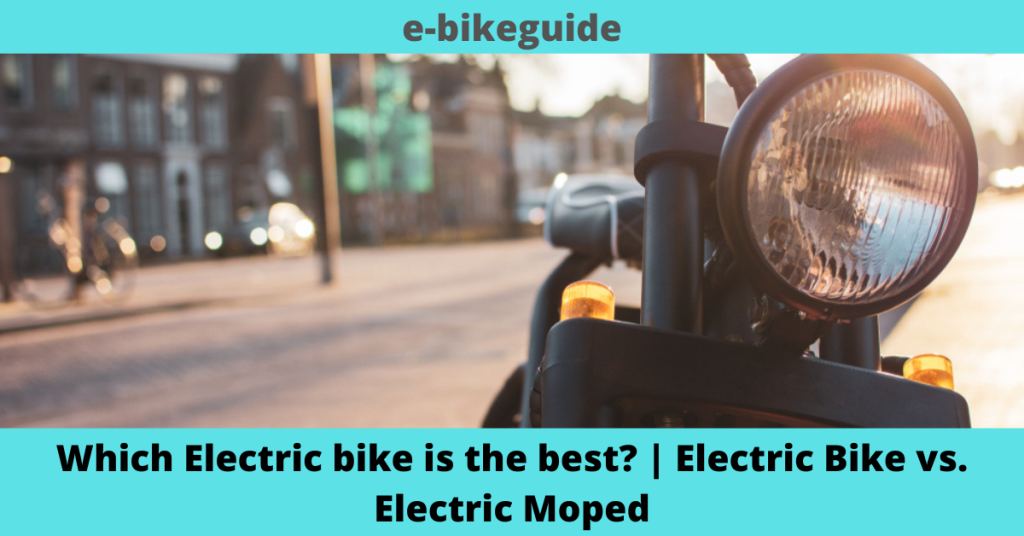It’s been over 200 years since the invention of electric bikes, and now is the ideal time to embrace the electric vehicle trend more than ever.
With skyrocketing fuel prices, environmental damage, and health issues on the rise, electric bikes seem the best way to save fuel and replace unnecessary car rides while losing weight.
Also, as the global population increases, so does traffic. What better way to get to your destination than gliding through stationary vehicles with the wind blowing in your hair? The usage of Electric Bikes and Mopeds is soaring as they are turning out to be more fuel-efficient and cost-friendlier than cars. Using a moped or an electric bike, you help save around 500 pounds of carbon emissions, which is a massive individual contribution to one’s environment.

E-Bikes and Mopeds are part of the solution, and here’s some information that could come in handy if you are confused about which is a better option: The Electric Bike or the Electric Moped.
Before we venture into the benefits of each, let’s discuss the features and differences of these product offerings in detail.
Everything you need to know about E-Bikes
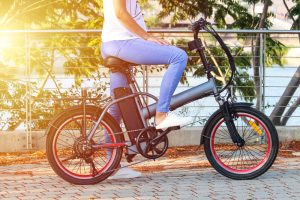
Electric bikes or e-bikes are bicycles with a rechargeable battery-powered motor mounted on the bike to assist you with pedaling. The power outcome of this motor depends on the effort you put into pedaling and is designed to help you with an accelerative boost so that you can control the speed with your feet, just as you would with a regular bicycle, only faster, better, and more powerful. So, your bike’s boost relies on the pedal’s strength, resulting in a higher speed. However, the rate of assistance that the motor can provide is regulated worldwide. Generally, engines in most countries are limited to 16 mph, while in the USA, e-bikes can go up to 20mph. So, riders can afford to ride faster and push these limits, but it depends on their effort, and the Bikes are designed to cut out when they reach their regulated speed limits.
An E-Bike manufactured according to the laws and regulations should ideally provide detailed information about the manufacturer, the maximum power output specifications, voltage, maximum speed that the pedal will allow, and motor information. This data is fundamental as anything beyond the maximum power output and rate will find itself in the Motorbike category, a whole different ball game.
Some E-Bikes also offer modes to choose from. For example, you can control the rate of assistance you receive and adjust the boost setting accordingly to the terrain you ride. This way, you can balance the battery life with the increase supplied through these pedals.
Throttle type E-Bikes

Apart from pedal assistance, the throttle type is also another popular option in terms of power delivery. In this alternative, one does not need to pedal at all. Instead, the Rider decides when to turn the motor on or off. With this style of e-bike, you can always ride without any serious effort or prolonged pedaling, which could be exhausting if you commute long distances.
The mix of Throttle and Pedal
Although reasonably rarely available, some bikes let you pedal on throttle and assistance mode.
Types of Motors used in E-Bikes

When considering E-bikes as an investment, it is essential to look at the motor and its location as it depends on what type of electric bike it belongs to.
-
Front Hub Motor

The most affordable option on the list, this motor is the minor complex of all three and is built onto the front wheel. Unfortunately, riding with this motor tends to give an unnatural feel and is less popular than rear-wheel motors.
-
Rear Hub Motor
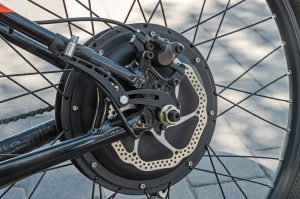
This option is more accepted than the above as the motor pushes the Rider instead of the front-wheel engine, making the riders feel like they are going the bike rather than the bike itself. However, this option requires different accessories but is very low on maintenance.
-
Mid-Drive Motor
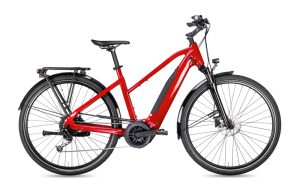
The most favored option out of the lot is Mid – Drive motors, which lets riders transition seamlessly between the front and rear wheels. In addition, this motor is the costliest of the three due to the convenience factor.
Types of Batteries used in E-Bikes
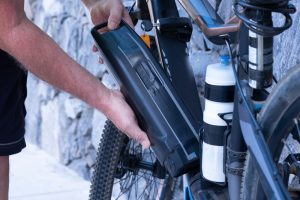
Once you have finalized your motor, the next factor to consider is the battery which also comes in different power ranges, just like the motor. Battery power is measured in Watts Per Hour and not Watts. The battery power of E-Bikes does not generally exceed 500 watts per hour and can be located anywhere between the boot, frame, middle of the bike, or the frame itself.
-
Lead-acid Batteries

Cheap. Can last up to 500 – 600 charges per E-Bike
-
Lithium-Ion Batteries

Can last up to 1000 charges. Same batteries are used in modern-day mobile phones and laptops.
Types of E-Bikes as per the purpose
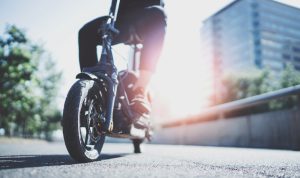
Did you know that there are bikes that could carry up to 400 pounds of merchandise while riding at an impressive 15 mph? Yes.
E-Bikes are designed and manufactured to cater to the most discerning biker. They are designed to suit different riding scenarios and terrains. Some popular options are Beach Cruiser, Road, Commuter, Recreational, Folding, Mountain, and Hardtail.
- Road Bikes, for example, are the most popular option. They are designed for low-traffic commuting, asphalt roads, speed, and convenience. They have large wheels designed for paved roads and have significantly less suspension.
- City bikes cater to urban commuters and come with comfortable seating and wide tires, designed for long-distance, relaxed riding.
- Beach Cruisers, as the name suggests, is meant for cruising. This bike is all about comfort and laid-back riding rather than speed.
The Moped – what is it?
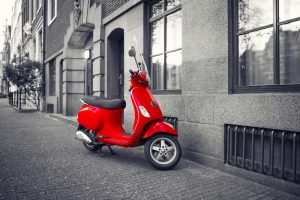
There are some significant differences between the two.
Unlike the E-Bike, a moped is a motorized, 100% battery-powered vehicle WITHOUT pedals that do NOT use gasoline, unlike most motorcycles.
It is a perfect option for riders as it comes with the ease and convenience that you’d expect from an electric scooter and is ideal for daily commuting to work, shopping, gym, and essentially, for avoiding traffic and getting to the required destination quicker than other options. In addition, it is the ideal vehicle for the urban metro commuter that travels to and fro on short-distance trips.
Since a battery powers the Moped, it is a cost-friendly and environmentally-friendly option favored by millions of riders worldwide. Mopeds are also ideal for beginners, as they can place their feet in front of them, and the seats are lower than other vehicles.
Legal concerns regarding Mopeds

Depending on the location you are in, it helps to look into these factors before you spend your money on a moped you may not be able to use later.
- Certain states require you to wear a helmet
- Some have speed limits, and some do not allow you to ride on highways or high-speed roads.
- Possible age restrictions
Types of Motors used in Mopeds
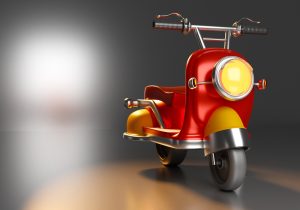
When purchasing a moped, it is essential to look at its size.
By the number of watts, you can assess its ability and decide if it will suit your requirement, based on the conditions you hope to ride in daily. For example, moped Motors start from 200 watts and can go over 5000 watts, which is an ideal power level if you frequently head to the mountains.
-
Brushed DC Electric Motors
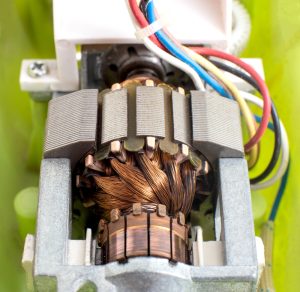
The oldest invention in motor technology, brushed motors rely on electric to mechanical energy conversion.
-
Brushless Motors
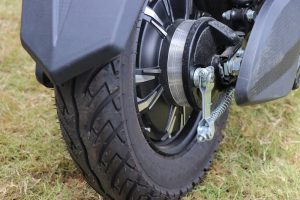
The modern discovery of motors, the brushless motor uses digital switching circuit theory to replace the mechanical segment of the Brushed DC Motors with electric coils.
Brushless motors are less prone to technical malfunctions and are quieter.
-
Hub Motors

Hub motors are simple, light, and affordable. However, maintenance can be tedious.
-
Mid-Drive Motors
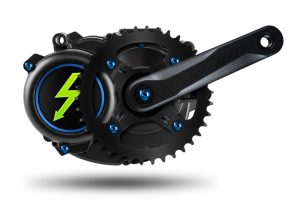
Unlike conventional hub motors, this variety enhances and delivers more power and is easier to service and maintain.
Types of Moped batteries
-
Lithium-ion batteries

They are light in weight and can store high volumes of electricity compared to Nickel-metal hydride batteries.
Lithium Iron Phospate, in particular, is a sub-category of the Lithium- Ion Battery range that is smaller, lighter, and has a longer shelf life than standard lithium batteries.
-
Sealed lead-acid batteries

These are heavy, making them unsuitable for electric scooters, and are ideal for heavier vehicles such as cars and trucks.
-
Nickel-metal hydride batteries

This range is the safest out of the list due to its reduced usage of active materials. However, they are slow to charge and are unsafe to use in high temperatures.
How are MOPEDS better than E-Bikes?
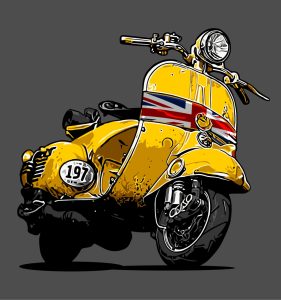
- Mopeds are faster than E-Bikes as their maximum speed can go up to 45 km/h
- Mopeds are easier to protect as they are heavier and more accessible to locate
- Riders do not need to exert themselves with tiresome peddling.
- Has space for extra passengers or goods
- Comes with additional storage space.
- Mopeds are an eco-friendly alternative that is highly beneficial for the environment.
- They are easy to park, service and maintain
- The cost of maintenance is low
- Easy for beginners who someday aspire to ride heavier motorcycles as they are easy to learn and ride.
- A moped is very versatile with many different uses
- Looks more stylish than an Electric Bike.
How are E-Bikes better than Mopeds?

- E-Bikes are more affordable than Mopeds.
- They do not require driving licenses to ride, meaning anybody can find it helpful at any time.
- Electric Bikes do not need insurance.
- They do not require registration.
- You can follow the same pathways as cycles, unlike mopes, who have to conform to roads only. On an E-Bike, you can ride around parks, sidewalks, pavements, and alleys – anywhere you, please.
- Healthier option than Mopeds as it is a good form of exercise because of the pedaling feature. Excellent source of cardio.
More benefits of Electric Bikes over Mopeds

- E-Bikes do not require special outfits, whereas Moped riding is on the road, and it is advisable to wear safe attire, such as helmets and gloves.
- Easy to assemble as there are plenty of tutorials online. Riders do not require any technical knowledge.
- Very easy to maintain, easy to clean, and quick dry.
- Spare Parts are readily available in every state and region.
If you have a regular bike, you can easily convert it into an Electric Bike. All you need to do is use ready-made convert kids available on the market.
As you can understand by now, both vehicles have their benefits. Choosing the best option based on the following factors is beneficial, irrespective of what you might end up going with.
- Your affordability and budget
- Durability of parts
- The distance that could you could cover in a single charge
- Battery and overall design of the vehicle
- Commute Distance
The cost incurred is directly proportional to the value you expect for yourself. Depending on your needs, you will have to spend more and invest in a Moped if the E-Bike does not satisfy all of your requirements. A good Electric Bike with high specifications can sometimes be equally good as an average Moped and provide you with the value you need.
